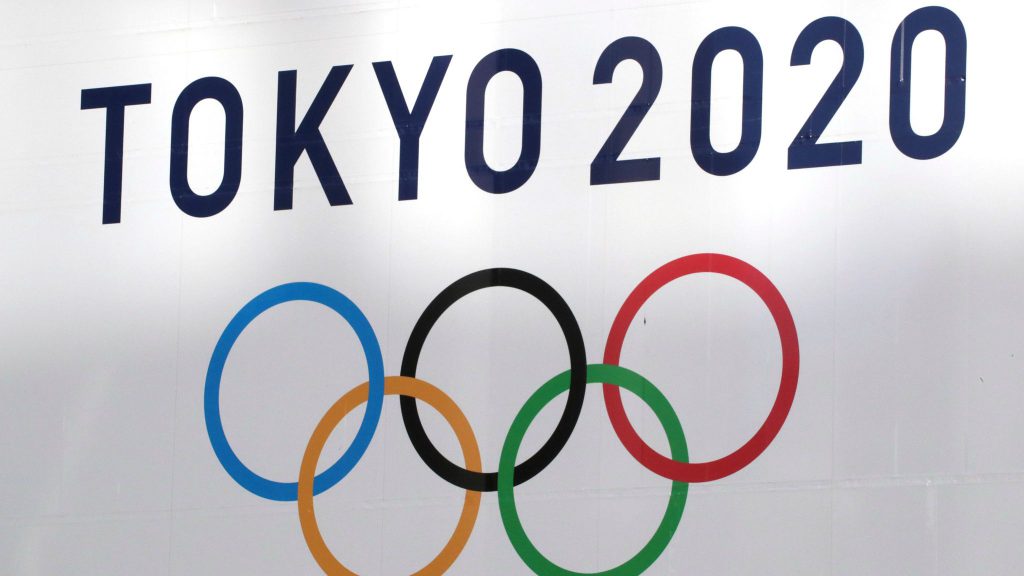
หลังจากล่าช้าหนึ่งปี, การแข่งขันกีฬาโอลิมปิกฤดูร้อนครั้งที่ 32 เปิดอย่างเป็นทางการในโตเกียวเมื่อเดือนกรกฎาคม 23, และนักกีฬาจากทุกประเทศได้เข้าสู่หมู่บ้านโอลิมปิก.
นักกีฬาและผู้ชมจากทั่วโลกกำลังหลั่งไหลเข้าสู่โตเกียว, สร้างแรงกดดันอย่างมากต่อความพยายามของญี่ปุ่นในการป้องกันและควบคุม COVID-19 และการทดสอบกรดนิวคลีอิก.
ในกรณีนี้, การกักกันสนามบินญี่ปุ่นไม่ได้เลือกวิธีการสุ่มตัวอย่างแบบ swab nasopharyngeal แบบดั้งเดิม, แต่น้ำลายเป็นตัวอย่างสำหรับการทดสอบกรดนิวคลีอิก COVID-19.
เราต้องทำการสุ่มตัวอย่างสวอตคอหอยโดยทั่วไป, “น้ำลาย” การทดสอบกรดนิวคลีอิกขึ้นอยู่กับสเปกตรัมหรือไม่? วันนี้เราจะเปิดเผยความจริงของการทดสอบกรดนิวคลีอิกน้ำลายสำหรับการแข่งขันกีฬาโอลิมปิกโตเกียว.
ในวิธีการตรวจจับนี้,, แต่ละคนจะได้รับหลอดทดลองที่คายน้ำลาย 1.5 มล..
นอกจากนี้ยังมีข้อกำหนดก่อนการทดสอบ: 2 ชั่วโมงหลังจากแปรง. อย่าดื่ม, กิน, ควันหรือแปรงฟัน 30 นาทีก่อนการทดสอบ. ในการแข่งขันกีฬาโอลิมปิกครั้งนี้, ผู้เข้าร่วมทั้งหมดในสนามบินและโรงแรมใช้วิธีนี้ในการตรวจจับ COVID-19 .
การทดสอบนี้ได้ลองจริงเมื่อปีที่แล้ว.
ในเดือนพฤษภาคม 2020, สหรัฐอเมริกา. FDA ได้รับอนุญาตการใช้งานฉุกเฉินใหม่สำหรับการทดสอบน้ำลายมหาวิทยาลัย Rutgers Covid-19, ทำให้เป็นการทดสอบน้ำลายที่ได้รับการอนุมัติจากองค์การอาหารและยาครั้งแรกที่ใช้ที่บ้าน. การทดสอบน้ำลาย COVID-19 ได้ดำเนินการอย่างเป็นทางการในโอซาก้า, ญี่ปุ่นเมื่อเดือนมิถุนายน 6, 2020, สำหรับการติดต่ออย่างใกล้ชิดกับอาการภายใน 9 วันที่เริ่มมีอาการ.
ก่อนหน้านี้, การทดสอบ COVID-19 โดยทั่วไปจำเป็นต้องมีการรวบรวมเมือกจากส่วนลึกของจมูกหรือปากของเรื่อง. อย่างไรก็ตาม, การกระทำนี้เชื่อว่าจะทำให้ผู้ป่วยมีอาการไอหรือจามได้ง่าย, เพิ่มความเสี่ยงของการติดเชื้อ.
อย่างไรก็ตาม, วิธีการตรวจจับน้ำลายใหม่ไม่ต้องการพนักงานอีกต่อไป, และต้องการเก็บน้ำลายโดยผู้ป่วยเท่านั้น, ซึ่งง่ายและปลอดภัย.

ขั้นตอนการตรวจจับกรดนิวคลีอิกน้ำลาย
ที่ใช้กันมากที่สุด ไม้กวาดคอหอย ตัวอย่างกรดนิวคลีอิกถูกถ่าย, กุญแจสำคัญคือการรวบรวมความลึกและความยาวของการติดต่อและเยื่อเมือก, ดังนั้นคุณต้องสุ่มตัวอย่างความลึกของนักวิจัยเป็นเวลานาน, และการตรวจหาน้ำลายจำเป็นต้องมีอาการไอลึกในภายหลังแทนที่จะเป็นตัวอย่างน้ำลายถ่มน้ำลายธรรมดา, ต้องทำ 3 ~ 5 ช่วงเวลาที่ลึกล้ำ, พยายามปลดปล่อยไวรัสในทางเดินหายใจ, รับประกันน้ำลายหรือมีไวรัสจำนวนมาก.
จากการวิจัยระหว่างประเทศในปัจจุบัน, วิธีการตรวจจับกรดนิวคลีอิกน้ำลายมีอัตราการลดความไวของ 10% ถึง 20%, แต่ถ้ามีการทดสอบอย่างต่อเนื่องเป็นเวลาหนึ่งหรือสองสัปดาห์, นอกจากนี้ยังสามารถมีผลกระทบบางอย่างในหลักการ.
การวิจัยในปัจจุบันได้พิสูจน์แล้วว่าความไวและความจำเพาะของการตรวจจับกรดนิวคลีอิกน้ำลายนั้นเปรียบได้กับวิธีการตรวจจับกรดนิวคลีอิกที่พบมากที่สุด.
ทีมวิจัยมหาวิทยาลัย McGill ตีพิมพ์การศึกษาในวารสารการแพทย์นานาชาติชั้นนำ ACP (วารสารวิทยาลัยแพทย์อเมริกัน). ผ่านการวิเคราะห์ที่ครอบคลุมของ 37 ศึกษาความไวของ ผ้าเช็ดจมูก และน้ำลายในการตรวจจับ Covid-19, ผลลัพธ์ที่ได้ข้อสรุปคือการสุ่มตัวอย่างน้ำลายดูเหมือนจะมีความอ่อนไหวเท่ากัน, ปลอดภัย, และทางเลือกที่ถูกกว่าสำหรับ swabs nasopharyngeal สำหรับการทดสอบกรดนิวคลีอิก.
เป็นมูลค่าการกล่าวขวัญว่าวิธีการตรวจจับกรดนิวคลีอิกน้ำลายนี้ไม่ได้ถูกนำมาใช้ในประเทศของฉัน.
การเก็บตัวอย่างน้ำลายเป็นวิธีที่ไม่เป็นอันตรายและไม่เจ็บปวดเพื่อให้ได้ DNA, การทดสอบในห้องปฏิบัติการของโรคหลอดเลือดหัวใจใหม่ส่วนใหญ่ดำเนินการจากสองด้าน:
หนึ่งคือการทดสอบที่ทำให้เกิดโรค, นั่นคือ, การทดสอบกรดนิวคลีอิก COVID-19; อีกอย่างคือการทดสอบทางเซรุ่มวิทยา, นั่นคือ, การทดสอบแอนติบอดี IgM เฉพาะของ COVID-19.
อดีตดีกว่าสำหรับการวินิจฉัยก่อน, ในขณะที่หลังไม่เหมาะสำหรับการวินิจฉัยก่อน. ดังนั้น, การตรวจจับกรดนิวคลีอิกเป็นสิ่งที่เราคุ้นเคยมากที่สุด.
หลักการของการตรวจจับกรดนิวคลีอิกน้ำลายเป็นเช่นเดียวกับ swabs nasopharyngeal swabs, ซึ่งใช้เทคโนโลยี PCR เรืองแสงแบบเรียลไทม์สำหรับการตรวจจับกรดนิวคลีอิก COVID-19.
เมื่อเทียบกับ swabs nasopharyngeal, การทดสอบน้ำลายมีข้อ จำกัด-มันจะเพิ่มความซับซ้อนของตัวอย่างการประมวลผลและเวลาการทดสอบ. นี่เป็นเพราะตัวอย่างน้ำลายค่อนข้างหนืดและต้องการการประมวลผลก่อนการทำเงินล่วงหน้าเช่นตัวอย่างเสมหะ, ซึ่งเพิ่มขั้นตอนการตรวจจับและเวลา.
แต่ตั้งแต่โตเกียว 2020 การแข่งขันกีฬาโอลิมปิกเลือกการทดสอบน้ำลาย, จะต้องมีข้อได้เปรียบบางอย่าง, นั่นคือ, มันไวต่อเวลามากขึ้น.
วิธีการตรวจจับไวรัสน้ำลายใหม่ที่พัฒนาร่วมกันโดย Nihon University และ Tokyo Medical University สามารถตรวจจับผลลัพธ์ได้เพียง 19 นาที. เมื่อตัวอย่างทดสอบและรีเอเจนต์ผสมและร้อน, ผลการทดสอบเชิงบวกจะแสดงสีที่แตกต่างกัน. การเก็บตัวอย่างน้ำลายเป็นวิธีที่ไม่เป็นอันตรายและไม่เจ็บปวดเพื่อให้ได้ DNA, ทีมทดสอบเสร็จสิ้นแล้ว 100 การทดลอง, และความแม่นยำของวิธีการทดสอบนี้เปรียบได้กับการทดสอบ PCR. ดังนั้น, ในอนาคต, การทดสอบกรดนิวคลีอิกน้ำลายอาจเป็นที่นิยมและใช้งานได้จริง.


















